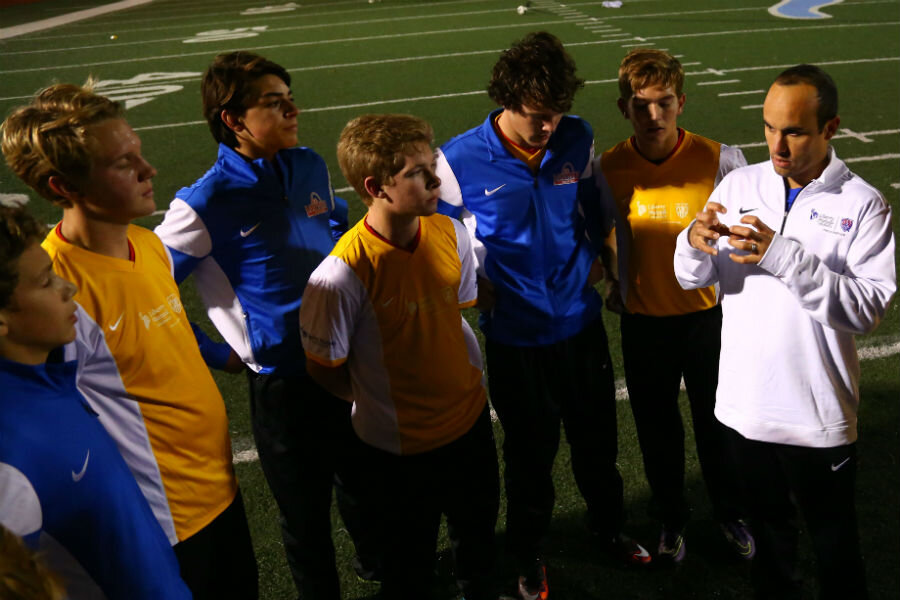Reported youth soccer injuries have more than doubled. Why?
Loading...
A new study from researchers at Nationwide Children’s Hospital in Columbus, Ohio finds that the number of young soccer players who made a visit to the emergency room for injuries sustained on the field has more than doubled over recent decades, rising from just over 100 per 10,000 in 1990 to some 225 in 2014.
That trend was especially pronounced when it came to concussions and similar injuries, with the annual rate skyrocketing over 1,500 percent over the time period examined. And as the study notes, a growing awareness of the “potentially serious consequences of sports-related concussion” might simply mean that more incidents end up with a hospital visit.
“I wouldn’t necessarily say that the amount of injuries has actually increased, I’d say the amount of injuries reported has increased,” says Samantha Scarneo, a director of sport safety at the University of Connecticut’s Korey Stringer Institute who did not contribute to the study.
Where people used to think that “getting your bell rung” wasn’t significant, she tells The Christian Science Monitor, a flood of new initiatives by public-health organizations and state laws calling for parents, officials and athletes to receive education on the health impact of concussions on youths have instilled a greater scrupulousness among members of the public.
But some experts also say that as children and their parents take a less catholic attitude toward sports, focusing their ambitions on one sport and playing it year-round, they might be putting kids at a greater risk for injury.
"In the 1990s, kids played for one season and then they were done. Now kids can play year-round and in multiple leagues so they don’t have a lot of time to recover,” said Tracy Mehan manager of transnational research at the Center for Injury Research and Policy at Nationwide Children’s Hospital, in an interview with ABC. "If you play one other sport, it allows a break mentally and physically.”
“They’re not thinking about playing the sport for the fun of the sport and being active, they’re thinking, ‘where is this getting my kid in life?’” says Ms. Scarneo. “I’m hoping that that mindset starts to shift, because playing multiple sports might be more beneficial.”
Concussions and other closed head injuries, which saw the most concentrated leap in reports, still accounted for only 7 percent of all injuries. And the study’s authors add that the findings underscore “the need for increased injury prevention efforts” among parents, administrators and players.
Part of those efforts might consist of public education on what researchers call “physical literacy,” a term that stresses the development of proper mechanics for moves spanning a wide variety of athletic activities. By getting coaches and educators to implement certain warm-ups as a standard, experts say they could prevent injuries from developing down the road, especially among younger participants.
“At younger ages – the 7 to 12 age range, or 7 to 14 – those kids are not learning how to move properly,” says Scarneo. “If we can fix their biomechanics at a younger age, then we’d probably be able to see a reduction [in injuries to their extremities] when they get older.”








